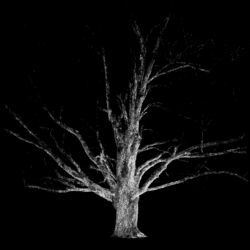Budget Proposals
The uncertainty concerning the proposed tax rules that will govern registered charities that arose on November 12, 1981 and was prolonged by the Discussion Paper issued in May, 1983 has, it is to be hoped, now been resolved with the introduction of the relevant Budget Resolutions of the Notice ofWays and Means Motion to Amend the Income Tax Act which accompanied the February 15, 1984 Budget. Of the 45 Budget Resolutions, nine relate to charitable donations and registered charities. With some exceptions, the proposed rules relating to the tax treatment of registered charities, will be effective for taxation years commencing after 1983. Briefly, Budget Resolutions 27 to 34 inclusive provide the following:
(I) a charity will be required to be registered as a charitable organization, a public foundation or a private foundation;
( 2) for taxation years commencing after 1984, a charity will not be able to qualify as a charitable organization or public foundation when a majority of its directors, officers or trustees do not deal with each other at arm’s length or, in the case of a charity registered after February 15, 1984, where 50 per cent of its capital was contributed by one person or a group of persons who do not deal with each other at arm’s length;
(3) when calculating the minimum distribution requirements, a charitable organization will no longer be required to include in receipted donations, gifts received subject to a direction that the property or properties substituted therefor be kept for a minimum of 10 years, and gifts from the capital of an estate (presumably testamentary gifts) will not enter into the calculation of the minimum distribution requirements for any registered charity;
( 4) in order to retain its registration, a charitable foundation must spend on charitable activities and/or gifts to qualified donees the aggregate of:
– 80 per cent of receipted donations received in the preceding year;
– 80 per cent (or in the case of a private foundation, 100 per cent) of gifts from other charities received in the immediately preceding year; and
– 4.5 per cent of the value of its investment assets at the beginning of the year.
(5) for 1984 and subsequent taxation years, a registered charity will be allowedto carry over disbursements which are in excess of the minimum distribution requirements;
(6) the Minister of National Revenue will have the discretion to reduce the minimum distribution requirements of any charity, presumably in appropriate circumstances;
( 7) the time for filing both the information and public information returns will be extended from three months to six months after the end of the organization’s taxation year, this provision to be applicable for the 1984 and subsequent taxation years;
( 8) a special tax will be payable either by the issueror borrower when a nonqualified investment of aprivate foundation does not produce a minimum rate of return to the foundation;
(9) anti-avoidance rules will be introduced:
– to prevent a group of charities from reducing or postponing distribution requirements by transferring funds within the group;
– to levy a special tax of 25 per cent when a foundation transfers more than 50 per cent of its capital to a charitable organization with the purpose of reducing or postponing disbursement requirements; and
(10) if a registered charity does not use an accumulation of funds for the specific purpose for which they were set aside (with the concurrence of the Minister of National Revenue) the amount will be considered a receipted donation in the year in which the funds are expended with the result that such funds will enter into the calculation of the minimum distribution requirements for the registered charity.
The 1984 Budget proposals, with a few exceptions, appear to cover the contents of the two Press Releases dated April 21, 1982 and December 20, 1983 which set out the proposed tax treatment of charitable foundations as well as the government’s reply to the representations made by interested parties after publication of its Discussion Paper of May 1983.
In summary, the 1984 Budget proposals will keep intact the status quo relating to the tax treatment of charitable organizations with some exceptions. The principal one is the ability of a charitable organization to exclude, in its charitable donation receipts, those gifts that are to be retained for a minimum of 10 years and testamentary gifts. The minimum distribution requirements of a charitable foundation will be based partly on donation receipts and gifts from other charities and partly on the value of investment assets ( 4.5 per cent). The proposed rules relating to the tax treatment of charitable foundations appear to follow those outlined in the Press Release dated April 21, 1982 which were agreed to by The Association of Canadian Foundations.
One other proposal of the 1984 Budget relating to the charitable sector is Resolution 23 which will provide, when enacted, for a possible non-recognition of a gain relating to Canadian real property. Briefly, this provision will provide that a taxpayer can make a charitable gift of Canadian real property at less than fairmarket value when the gift is made by a non-resident to a prescribed non-resident charity but only where the use of that property will be in the interest of the Canadian public. This provision, when enacted, will be effective for gifts made after February 15, 1984.
The Gull Bay Development Corporation v. The Queen
The Federal Court-Trial Division recently issued a judgment in The Gull Bay Development Corporation v. The Queen, 84 DTC 6040, which will be of interest to charities whose charitable activities include activities which have the characteristics of a commercial operation. In this case, the court found a commercial logging operation to be a charitable activity.
The Gull Bay Development Corporation was incorporated by the Gull Bay Indian Reserve to “promote the economic and social welfare of … members of the Gull Bay Indian Reserve …”. A number of members of the Reserve were employed by The Gull Bay Development Corporation to carry out maintenance work on the recreational and administrative buildings and facilities and perform other social and charitable activities determined to be beneficial to the social and economic welfare of the members of the Reserve. In addition, other members of the band were employed to carry on logging operations. At the time of the trial, there were about 71 employees of the Corporation, 49 engaged in logging and 22 in other activities. It was estimated that in 1975, 12 to 25 employees worked directly in logging. For the taxation year 1975, the taxpayer earned a profit from the logging operations, and the Minister assessed the taxpayer for corporate income tax. The Gull Bay Development Corporation’s principal argument was that it was a nonprofit organization as defined in Section 149( 1 )( 1) of the Income Tax Act on the basis that the primary motive for setting up the Corporation was to deal with problems on the Reserve and to create activity to raise funds for this purpose. The Minister argued that, based on the facts, the Corporation was not a non-profit corporation.
The appeal was allowed. The court found that the taxpayer was both a”charitable organization” and an”association organized and operated exclusively for social welfare, civic improvement, pleasure or recreation or for any other purpose except profit” and that the Corporation’s income was exempt from income tax. The Corporation was not set up, as its Letters Patent indicated, to carry on a commercial activity, although there was no doubt that the motive for forming the Corporation may have been that it was desirable to provide employment and training to otherwise unemployed Indians on the Reserve by engaging in a commercial activity. The court found that the social and welfare activities of the Corporation were not a cloak t) avoid payment of tax on a commercial enterprise but were the real objectives o1 Lhe Corporation.
Interpretation Bulletins Revised
Two recently revised Interpretation Bulletins issued by Revenue Canada will affect the fund-raising activities of charities.
In Interpretation Bulletin IT-110R, Charitable donation and like receipts: Tickets and specialfund-raising events, Revenue Canada has set out a number ofnew policies. First, charities may now determine the donation portion of tickets to fund-raising events such as dinners, balls, concerts and shows. Previously, the donation portion of such tickets had to be determined by Revenue Canada before the receipts were issued. In the future, pursuant to Revenue Canada’s policy outlined in paragraph 3 of IT-110R, the charity must satisfy itself that each amount for which it issues a receipt represents a voluntary transfer of property from a donor for wh.ich the donor expects to receive no consideration. Further, instead of being required to value the benefit portion of the price of the ticket to such events as the lesser of the pro rata cost of the benefit and the fair market value thereof, in the future, the amount of the gift or donation will be the payment to the organization reduced by the fair market value of the ticket or admission to the function or event determined by making a comparison to the regular or usual charge for attendance at the same or a similar function or, in the absence of a comparable event, the estimated price that would have been charged for a function or event of the same kind carried out as a profit-making venture. This change will allow charities to determine the donation-receipt portion of the ticket in advance.
The Bulletin also states that where goods or services are acquired from a charity no part of the purchase price will qualify as a gift or donation. Goods or services acquired by auction or as a result of some other sales method are considered to have a fair market value equal to the price paid to obtain them. This would include any cost for admission to an exhibition or sales event. Further, no donation receipt can be given for any portion of the price paid by the purchaser to participate in a game of chance or draw or lottery even though the charity separates out the cost to participate or the cost of the lottery ticket from the donation portion. This policy will extend to the price of admission to a dinner, ball, concert or show which includes participation in a lottery or draw for prizes or awards with more than nominal value.
Interpretation Bulletin IT-297R, Gifts in kind to charity and others, was issued on February 20, 1984. It confirms that a donation receipt may not be issued to businesses which donate property to a charity where the cost has been, or should be, charged as a business expense. Therefore, businesses which donate merchandise or supplies to a charity in return for promotion or advertising for the taxpayer’s business may not receive a receipt therefor.
The third recently revised Interpretation Bulletin concerning charities issued by Revenue Canada is Interpretation Bulletin IT-lllR, Annuities purchased/rom charitable organizations. The bulletin confirms that a charitable organization may issue annuities without jeopardizing its registered status, but a charitable foundation may not do so. The department considers an undertaking to make annuity payments to be a debt incurred by the foundation which is cause for the revocation of its registration.
Taxation Advisory Revenue Canada has questioned a number of major charitable organizations about activities and statements that might be considered “political”, a designation which could affect their tax-exempt status under current legislation. The outcome of the current challenges will be reported in a future issue of The Philanthropist.
M.L. DICKSON, Q.C.
Member, The Ontario Bar
LAURENCE C. MURRAY
Thorne, Riddell, Chartered Accountants


